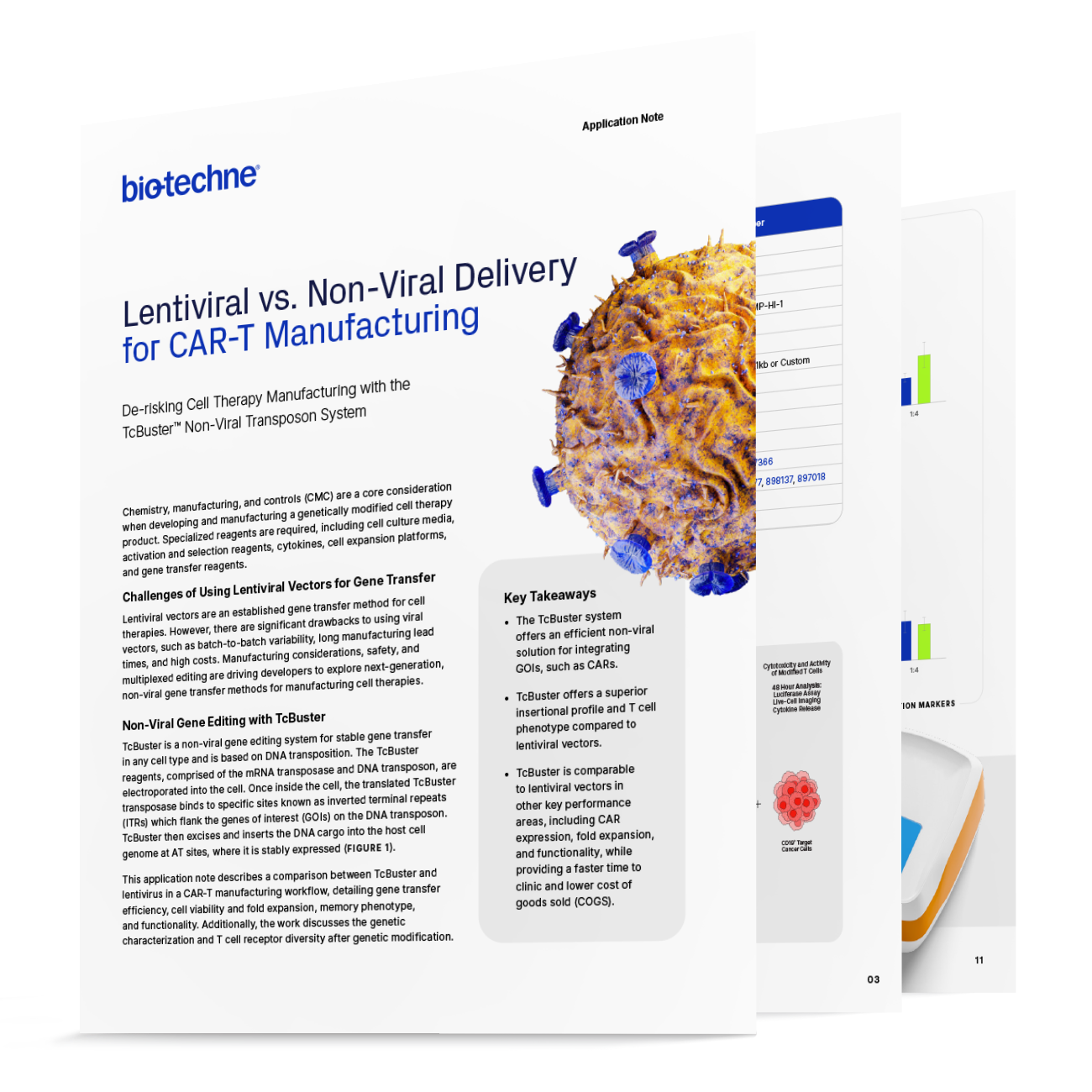Lentiviral vs. Non-Viral Gene Transfer for CAR-T Manufacturing
Application NotesLentiviral vectors are a well-established method for gene transfer in cell therapies. However, they present significant challenges, including batch-to-batch variability, lengthy manufacturing times, and high costs. These issues, along with safety concerns and the need for efficient multiplexed gene editing, are driving cell therapy developers to seek non-viral, next-generation gene transfer techniques for CAR-T production.
This application note introduces TcBuster-M™, a non-viral gene editing system based on DNA transposition. It details a study comparing the performance of TcBuster transposition to lentiviral transduction within a CAR-T cell therapy manufacturing workflow, with an in-depth look at:
- Gene transfer efficiency using TcBuster-M and lentiviral vectors with varying cargo sizes
- Resulting T cell health (viability and fold expansion)
- Genetic characterization and T cell receptor diversity after genome modification
- T cell phenotype analysis and functionality of TcBuster- and lentivirus-modified T cells
- The TcBuster transposition mechanism and timelines for generating research grade and GMP transposon material
